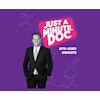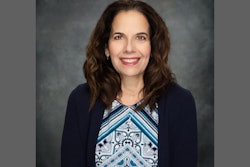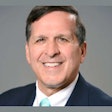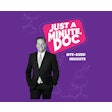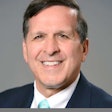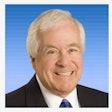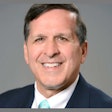The strongest person in a room is the one who can read others' body language.
As office managers, we deal with people daily. We generally know the temperature of the office we manage at any given moment, meaning if it is happy, sad, frustrated, or on the verge of imploding. Even when no one's lips are moving, everyone’s body language speaks volumes.
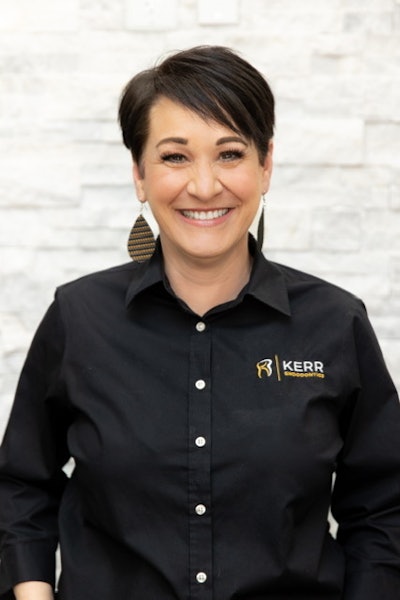 Lisa Scheer.
Lisa Scheer.
When you think about nonverbal communication, what first comes to your mind? Is it an eye roll, a smile, a clenched jaw, or a raised eyebrow? In all these examples, a person is expressing themselves without using words.
Nonverbal cues are physical expressions or movements that convey messages without uttering a single spoken word. If you are on the receiving end of a nonverbal cue or gesture, it is essential to interpret it correctly.
An office manager who can quickly read their doctor, staff, or patients through nonverbal cues possesses a powerful situational instinct. This instinct develops over time, and when honed, it becomes second nature and extremely valuable.
Since all aspects of communication are critical in any business, understanding and deciphering body language is equally as important as the spoken word.
Awareness
People look to leaders in times of stress, and how they interpret a leader’s nonverbal cues can impact how confident they are in that leader and their words.
As office managers, we spend a significant amount of time with doctors, our team, and patients, getting to know them on a deeper level. Understanding nonverbal communication provides valuable insights about the people around us.
For instance, someone may express happiness through wide eyes, frustration through furrowed brows, pain through wincing, sadness through a lowered head, or dishonesty through excessive nervous fidgeting. Recognizing these silent cues enables us as office managers and staff to address concerns proactively, showing genuine care, and potentially preventing issues from escalating.
People who are approached after displaying a silent cue tend to be more open to discussion and receptive to active listening, as they appreciate the value of attentiveness. This level of care and trust strengthens workplace relationships, patient engagement, and can enhance a business’s overall reputation.
Presence
Most bodily expressions are easy to spot and nearly impossible to fake. However, the overuse of social media has negatively impacted physical communication. Typed words often lack tone and emotional depth, stripping away the ability to match them with bodily cues.
Accurate communication happens when all parties give their full attention to one another, which is something far easier to achieve in person. Face-to-face conversations often involve natural mirroring, such as synchronized breathing rates.
In contrast, confrontational conversations may include escalated breathing and a lack of eye contact. While physical presence can feel intimidating to some, maintaining a positive rapport through good eye contact, a controlled voice tone, appropriate facial and bodily gestures, and respect for personal space can help ease discomfort. This in turn fosters a work environment where all individuals feel more comfortable addressing issues in person with the doctor, each other, and patients.
Trust the process
Surprisingly, active listening is not an innate skill for most of us, but it can be learned and developed through practice. Our brains process a thought and before we think of what to say about it, our body visibly reacts. Often, before we've even said anything, our body has given away our answer.
A doctor, manager, or staff member who leans into a conversation, making good eye contact and smiling, is displaying genuine concern, which signals affirmation and builds trust. If asked to paraphrase what they just heard, they could do so without hesitation because they used all of their senses to absorb the information while offering positive nonverbal cues in return.
Take the opportunity to always lead by example as an office manager, as employees can learn from their managers when it comes to nonverbal communication styles and techniques. By cultivating an awareness of body language in your practice, you’re enhancing your communication skills and setting the tone for a more connected and collaborative team. The team will hopefully use these situational instincts to their advantage, both personally and professionally.
Cultural considerations
Cultural differences play a significant role in nonverbal communication and should not be overlooked. What is considered a positive gesture in one culture may be perceived differently in another.
For example, direct eye contact is a sign of confidence and attentiveness in some cultures, while it may be seen as confrontational in others. Understanding these variations is equally critical and crucial for professionals working in diverse environments, ensuring that communication remains respectful and effective.
Practice makes perfect
Everyone is different, and the way they communicate tells their story differently. In the world of workplace communication, gestures play a pivotal role that often goes unnoticed. Improving and understanding body language can be very transformative for a practice.
Recognizing others doesn’t require grand gestures, as it’s more about being mindful of the small, consistent actions that convey respect, openness, and confidence. Reflect on and continually educate your team about the importance of body language in their patient care interactions. The way we all communicate nonverbally has the power to inspire trust, foster collaboration, and create a more positive workplace.
Lisa Scheer has been in the dental industry for more than 30 years, and almost all of her years have been spent in the endodontic specialty. She has been with her current office for 24 years. She is a member of the American Association of Dental Office Management (AADOM).
The comments and observations expressed herein do not necessarily reflect the opinions of DrBicuspid.com, nor should they be construed as an endorsement or admonishment of any particular idea, vendor, or organization.



